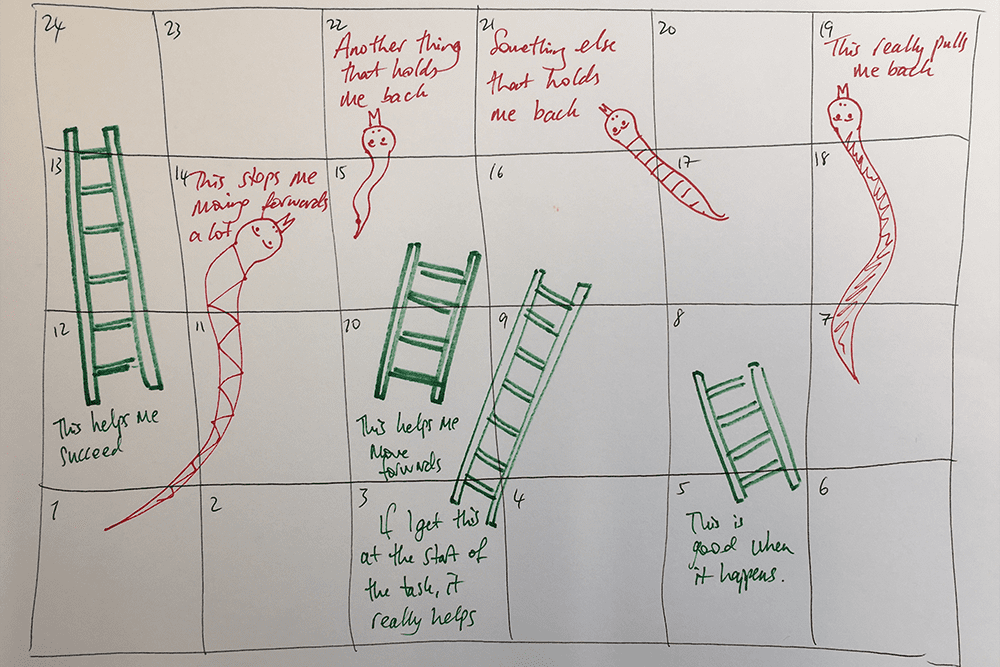I can’t stand a boring retro. Doesn’t the thought of another session of happy face, sad face makes you want to pull the duvet over your head and snooze the alarm clock?
So, whenever I’m working with a team, I try not to run the same retro format twice.
Sometimes this results in the obscure (such as yesterday’s warm up of puppies versus kittens!), but it also ensures I think about the aim of each retro rather than just going through the motions.
So when a product owner recently said they would like to focus on “how well the team feels they have what they need to get the job done” I put my thinking cap on.
I usually flick through Game Storming, Innovation Games, Hyper Island’s toolbox and Tasty Cupcakes looking for inspiration. They’re all great resources.
So this retro’s goal was to get each person in the room to highlight aspects that help them achieve their work, and things that hold them back.
Did I hear you mention Luke Hohmann’s speedboat? “If our team is this speedboat, what anchors are holding us back and keeping us from getting faster/better? What is the wind in our sails, pushing us to the land of amazing-ness?”
I love Hohmann’s ideas but I didn’t think that approach would float with this team [sorry for the pun], although they are creative, imaginative and fun.
I kept asking myself, “What best symbolises events that enable us to surge ahead? And what about when something pulls us back? One step forwards, two steps back. A sudden leap ahead. A curve ball that pushes us back a few steps.”
Snakes & Ladders

Equipment
- A stack of A3 paper
- Pencils
- Thick coloured marker pens
- Optional: stickers and whatever other creative materials you have
Purpose
The object of the exercise is to create a simple snakes and ladders board that reveals what enables and what prevents the team member’s from achieving their work goals.
Number of players
Ideally 3 to 9
How to play
- Facilitator explains that the aim of the exercise is to create a simple snakes and ladders board.
- To start, each person draws a simple grid on an A3 sheet of paper (6 x 4 is sufficient, but they can make it bigger if they wish).
- Tell each player to add a minimum of 3 snakes and 3 ladders to their board.
- Ask them to write something that would put them back in terms of progress at the top of each snake.
- Ask them to write something that would push them forwards in terms of progress at the bottom of each ladder.
- Each person then explains their board to the rest of the group.
- The group then discusses the board, with the facilitator enquiring whether the team wants to try to change the snake-y issues and, if so, how they might do it. The facilitator takes notes of any actions that are agreed.
- Repeat with each player’s board until they are all discussed.
- If there are too many actions, you can use your favourite selection method (e.g. dot voting).
Pros and Cons
Pros
- It’s fun.
- It’s easy.
- The team found it easy to generate the ‘snakes’ (preventers) and ‘ladders’ (enablers).
- It forces players to write the preventers/enablers succinctly (because it has to fit into a small box).
Cons
- It doesn’t have a mechanism for limiting the amount of actions that are generated.
- The facilitator needs to be able to manage time so that all boards get discussed, enablers/preventers are discussed sufficiently, and actions are generated.
